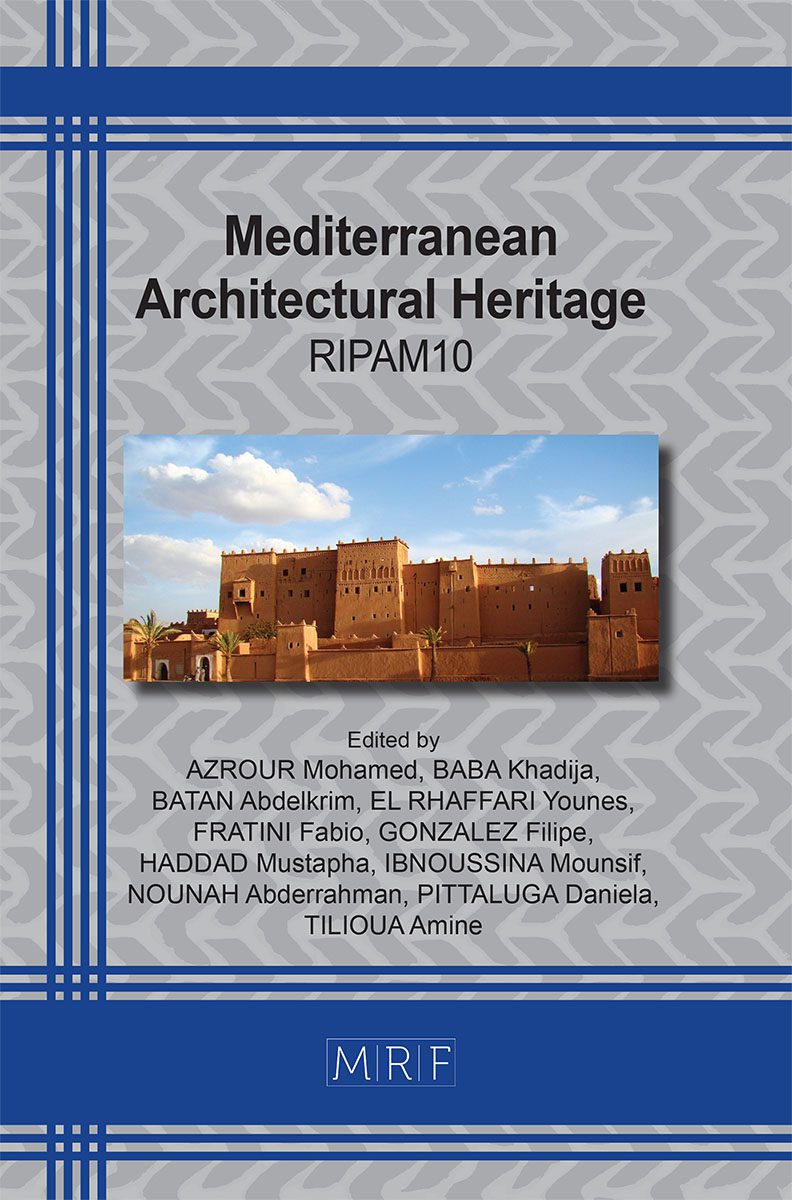Integrated Digital Documentation for Conservation, the Case Study of the Torre deli Upezzinghi Called Caprona, in Vicopisano (PI) Italy
Giovanni PANCANI
download PDFAbstract. Located on the Rocky Promontory overlooking the town of Caprona, the Upezzinghi Tower is a 19th-century reconstruction of a watchtower that once served the ancient castle, which existed in the mid-11th century and was destroyed by the Florentines in 1433. The hill on which it stands has been gradually eroded due to stone quarrying, significantly altering the landscape around Caprona. Until the mid of the last century, the rocky promontory was still substantially intact, and the remains of the medieval fortress could be identified beneath the tower. However, at its base, the remains of the medieval tower’s foundation are still visible. The structure is currently in an advanced state of architectural decay, and the extraction of stone material has been so aggressive that the quarry’s limit has come within about 50 cm of the tower’s profile. The small square-shaped building appears to be smaller than the one demolished in 1433 since measurements at the base of the current tower have confirmed one side to be approximately 4.50 meters, while the remains of the medieval tower had a side of about 5.00 meters. Digital surveying has been carried out for the preservation and conservation of the tower, which is in urgent need of restoration. TLS (Terrestrial Laser Scanning) and UAS (Unmanned Aerial Systems) tools were used with multiple acquisitions that were subsequently compared and calibrated, using the laser scanner point cloud as a reference. The maximum misalignment error of the TLS point cloud was within a maximum range of 0.015 meters. The delivery of the survey results, considering the modest size of the structure, was performed at a 1:20 scale.
Keywords
Tower of Caprona, Heritage Management, Digital Survey, Aerial Photogrammetry, Documentation, SFM
Published online 3/15/2024, 7 pages
Copyright © 2024 by the author(s)
Published under license by Materials Research Forum LLC., Millersville PA, USA
Citation: Giovanni PANCANI, Integrated Digital Documentation for Conservation, the Case Study of the Torre deli Upezzinghi Called Caprona, in Vicopisano (PI) Italy, Materials Research Proceedings, Vol. 40, pp 134-140, 2024
DOI: https://doi.org/10.21741/9781644903117-14
The article was published as article 14 of the book Mediterranean Architectural Heritage
![]() Content from this work may be used under the terms of the Creative Commons Attribution 3.0 license. Any further distribution of this work must maintain attribution to the author(s) and the title of the work, journal citation and DOI.
Content from this work may be used under the terms of the Creative Commons Attribution 3.0 license. Any further distribution of this work must maintain attribution to the author(s) and the title of the work, journal citation and DOI.
References
[1] E Repetti. (1833) Dizionario geografico, fisico, storico della Toscana contenente la descrizione di tutti i luoghi del Granducato. Firenze, Repetti, Vol. I, pp. 366-367.
[2] A Alberti. (2014) Monasteri e castelli sul monte pisano. Insediamenti medievali in un’area di confine (X-XII secolo), in: Salvatori E. (a cura di) Studi di Storia degli Insediamenti, Pisa, Pacini Editore, pp. 149-163.
[3] D Billia, V Croceb., G Montalbanoc., P Rechichid. (2023), La Torre degli Upezzinghi a Caprona:Caprona: analisi storico-archivistica e rilievo digitale per la documentazione dell’evoluzione temporale, in Bevilacqua M. G. , Ulivieri (a cura di), Defensive Architecture of the Mediterranean, Vol. XIII / (Eds.), Pisa University Press (CIDIC) / edUPV.
[4] F Condorelli. & F Rinaudo. (2018), Cultural heritage reconstruction from historical photographs and Videos, ISPRS Int. Arch. Photogramm. Remote Sens. Spatial Inf. Sci., XLII–2, 259-265.
[5] A Arrighetti., F Fratini., G Minutoli., G Pancani., (2022), Historical Seismic Events and Their Traces on Medieval Religious Buildings, in D’Amico S., Venuti V. (a cura di), Handbook of Cultural Heritage Analysis, pp. 2182-2209, Srpinger Nature Switzerland (ISBN: 978-3-030- 60015-0).
[6] G. Pancani (2017), Il centro storico di Poppi, analisi a livello urbano per la valutazione del rischio sismico, “DisegnareCon”, Vol 10, No 18 (2017), PDF 9.1-9.10. (ISSN 1828-5961).
[7] R De Marco.;, S Parrinello. (2021). Digital surveying and 3D modelling structural shape pipelines for instability monitoring, in, historical buildings: a strategy of versatile mesh models for ruined and endangered heritage, ACTA IMEKO, vol. 10, pp. 84-97, ISSN:2221-870X.
[8] G. Pancani, M Bigongiari. (22 June 2019), The integrated survey of the Pergmum by Nicola Pisano in the cathedral of Pisa, in a cura di Kremers H., Digital Cultural Heritage, Springer, Cham, Basel, (January 2020), pp. 373-388, DOI: 10.PA1007/978-3-030-15200-0, eBook ISBN: 978-3-030-15200-0.
[9] S Parrinello.; R De Marco.; A Miceli (2020). Documentation strategies for a non- invasive structural and decay analysis of medieval civil towers: an application on the Clock Tower in Pavia. RESTAURO ARCHEOLOGICO, vol. 28, pp. 18-43, ISSN:2465-2377.
[10] A Dell’Amico., S Parrinello. (2021). From Survey to Parametric Models: HBIM Systems for Enrichment of Cultural Heritage Management. In: Cecilia Bolognesi, Daniele Villa. 978-3- 030-49278-6, pp. 89-107, Cham: Springer.
[11] F. Fratini (2023), The Rocca Vecchia fortress in the Gorgona island (Tuscany, Italy): building materials and conservation issues, in Bevilacqua M. G. , Ulivieri (a cura di), Defensive Architecture of the Mediterranean, Vol. XIII / (Eds.), Pisa University Press (CIDIC) / edUPV.
[12] P. Cotte (2019) Monna Lisa dévoilée: les vrais visages de la Joconde. Parigi, éditions Télémauqe.












